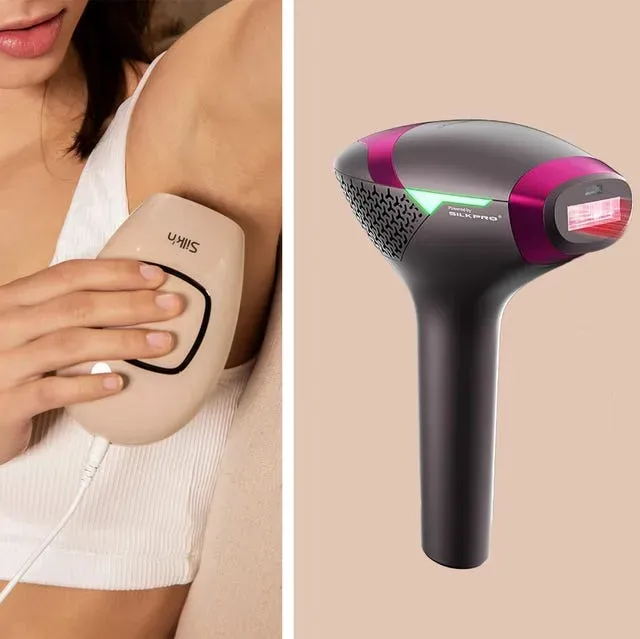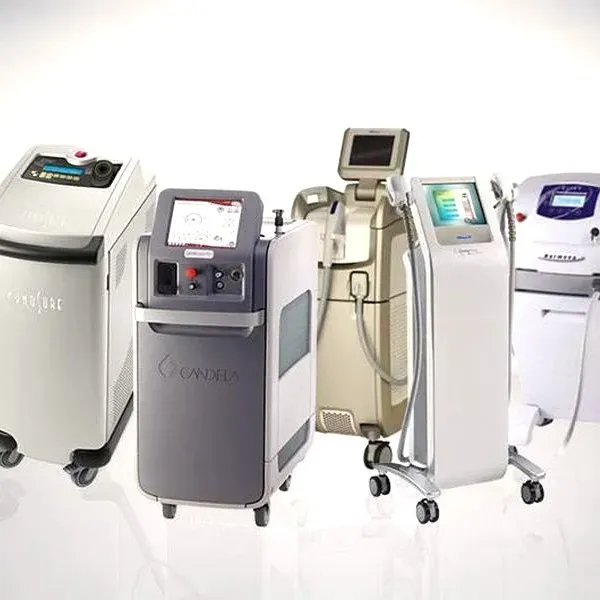Table of Contents
Tired of the endless cycle? Shaving nicks, waxing pain, those annoying stubbly days that seem to arrive before you even finish drying off? You’re not alone. Dealing with unwanted body hair feels like a second job for a lot of us.
Defining What is the Best Laser Hair Removal for You

Defining What is the Best Laser Hair Removal for You
It's Not One-Size-Fits-All, Despite What Ads Say
Let's get real from the jump. Asking "what is the best laser hair removal?" is a bit like asking "what's the best car?" A race car is terrible for hauling groceries, and a minivan won't win you any speed records. The "best" isn't a single machine or clinic; it's whatever fits *your* specific situation. Anyone telling you there's one magic bullet is probably trying to sell you something.
Think about it. Your skin is different from mine. Your hair is different. Your pain tolerance? Definitely different. What works wonders for your friend with pale skin and dark, coarse hair might do absolutely nothing, or worse, cause problems, for you if you have a deeper skin tone or fine, light hair. So, before you drop serious cash, you need to ditch the idea of a universal "best" and start thinking about what's best for *you*, specifically.
Skin Tone and Hair Color: The Non-Negotiables
Here’s the science bit, simplified: Most laser and IPL (Intense Pulsed Light) devices work by targeting the pigment (melanin) in your hair follicle. The darker the hair, the more pigment it has, and the easier it is for the laser to find and zap it. Skin also has melanin. The darker your skin tone, the more melanin your skin has.
The challenge? The laser needs to see the hair follicle without hitting the skin too hard. This is why the classic ideal candidate is someone with light skin and dark hair – there’s a high contrast, making the target clear. For individuals with darker skin tones, certain lasers are safer and more effective, specifically wavelengths that are less absorbed by melanin in the epidermis, like Nd:YAG. Using the wrong device on darker skin can lead to burns, discoloration, or scarring. Conversely, if your hair is very light (blonde, red, gray), there might not be enough pigment for the laser to target effectively, no matter your skin tone.
So, when figuring out what is the best laser hair removal *for you*, these are the first questions:
- What is your natural skin tone (even when not tanned)?
- What is your natural hair color and thickness in the area you want treated?
Beyond Pigment: Other Factors That Matter
skin and hair are primary, but they aren't the only variables. Cost is obviously a big one. Clinic treatments are generally more expensive per session but use more powerful, professional-grade equipment and are performed by trained technicians. At-home devices require a larger upfront cost but then offer unlimited sessions (though often less powerful results per session and they demand your time and effort).
Pain tolerance is another. Laser treatment isn't exactly a tickle. Some areas are more sensitive than others. Different machines have varying levels of discomfort, and some clinics or devices offer cooling features to help. Finally, consider the area you want to treat. A device or clinic specializing in large areas like legs might be different from one best suited for smaller, more delicate spots like the upper lip or bikini line. Thinking through these practical points gets you closer to defining what is the best laser hair removal option for *your* life.
Clinic vs. AtHome: Sorting Laser Hair Removal Options

Clinic vs. AtHome: Sorting Laser Hair Removal Options
Clinic vs. At-Home: Sorting Laser Hair Removal Options
so you've figured out if your skin and hair are even good candidates. Now comes the fork in the road: do you shell out for professional treatments at a clinic, or do you buy one of those gadgets you see advertised everywhere and DIY it at home? This is where the "Clinic vs. At-Home: Sorting Laser Hair Removal Options" decision really kicks in, and it's a major difference in approach, cost, and frankly, expectation. Clinic treatments usually involve more powerful lasers, handled by trained pros who know exactly how to crank up the energy without turning you into a lobster (hopefully). You show up, they zap, you leave. Easy, right? Well, easier on your effort, maybe not so much on your wallet. At-home devices, on the other hand, require you to be the technician. They're less powerful by design – you don't want just anyone wielding clinic-level lasers unsupervised – but they offer the convenience of treating yourself whenever you have a spare hour, usually for a lower overall cost after the initial purchase. It's a trade-off between raw power and professional guidance versus flexibility and potentially slower, less dramatic results.
Key Technologies: Understanding Laser Hair Removal Devices

Key Technologies: Understanding Laser Hair Removal Devices
Key Technologies: Understanding Laser Hair Removal Devices
Alright, let's peel back the curtain on how these things actually work. It's not magic, though sometimes after a few sessions it might feel like it. The core principle behind pretty much all laser and IPL hair removal is selective photothermolysis. Fancy word, simple idea: you're using light (photo) and heat (thermo) to specifically target and destroy (lysis) something. In this case, the target is the melanin in your hair follicle. When the light energy hits the pigment, it turns into heat, zapping the follicle and damaging its ability to regrow hair. Different devices use different types of light or lasers, which is where things get a bit more technical and impacts who they work best for and how effective they are.
Beyond the Machine: Ensuring You Get the Best Laser Hair Removal Results

Beyond the Machine: Ensuring You Get the Best Laser Hair Removal Results
Prep Work Matters: Getting Ready for the Zap
so you've picked a clinic or bought a device, understanding that finding what is the best laser hair removal involves more than just the machine itself. Now comes the crucial part: preparing your skin. Think of it like prepping a canvas before painting; you wouldn't just slap paint on a dirty, uneven surface. For laser hair removal, this means avoiding sun exposure like it's the plague for several weeks before your session. A tan means more melanin in your skin, increasing the risk of burns and making the treatment less effective because the laser gets distracted by the skin pigment instead of targeting the hair.
Shaving is usually required right before the session, but *don't* wax or pluck. The laser needs the hair follicle to be intact under the skin to have a target. If you pull the hair out from the root, the laser has nothing to aim for. Clean skin, free of lotions, oils, or makeup, is also essential. Your technician will likely clean the area, but arriving ready helps. Following these seemingly small steps significantly impacts the safety and effectiveness of your treatment, getting you closer to those desired smooth results.
After the Beams: Post-Treatment Care is Non-Negotiable
The laser did its job, hopefully zapping those follicles into submission. But the work isn't over if you want the best laser hair removal results. Immediately after treatment, the area might be red, slightly swollen, or feel like a mild sunburn. This is normal. Cool compresses can help. Avoid hot showers, saunas, or strenuous exercise for 24-48 hours, as heat can irritate the treated skin. Again, sun exposure is a huge no-no. Treated skin is extra sensitive to UV rays, making it more prone to burning and hyperpigmentation. Slather on broad-spectrum SPF 30 or higher religiously, even on cloudy days. Some people experience shedding of the treated hairs in the days or weeks following the session – this is a good sign it worked! Resist the urge to pick or scratch. Gentle exfoliation a week or so later can help the shedding process along.
To summarize the essentials for achieving the best laser hair removal results:
- Stay out of the sun before and after treatments.
- Shave right before, but never wax or pluck.
- Keep the treatment area clean and free of products.
- Apply cool compresses if needed post-treatment.
- Avoid heat and intense exercise immediately after.
- Use high SPF sunscreen on treated areas every single day.
Finding Your Best Laser Hair Removal Path
So, we’ve circled back to the original question: what is the best laser hair removal? The truth is, there's no single device or clinic that holds the crown for everyone. It boils down to matching the technology and setting to your specific hair and skin type, your budget, and your tolerance for discomfort (and potential disappointment if you go the DIY route without realistic expectations). Clinic treatments often pack more punch but cost more coin. At-home devices are more accessible but require consistency and patience, and frankly, they aren't a magic wand for everyone. The key takeaway? Do your homework, consult professionals if you're considering in-office treatments, and for the at-home options, read actual reviews from people with similar characteristics to yours. Don't fall for the hype; find the method that offers the most realistic chance of getting you closer to that hair-free life you're after, without draining your bank account or leaving you frustrated.
